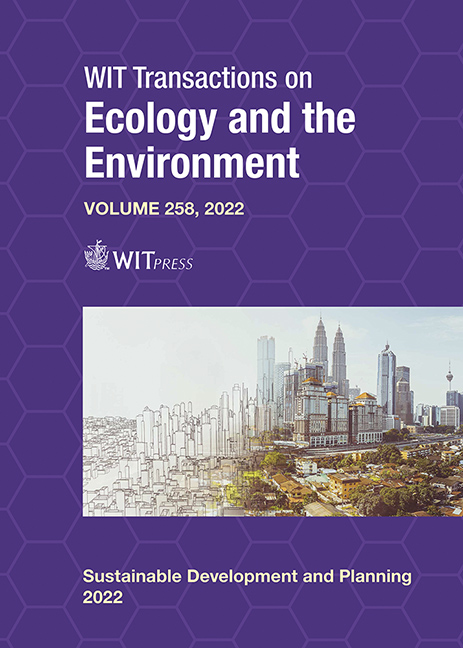TOWARDS A CONSENSUS OF EXPERT OPINIONS ON IMPLEMENTING ISO 14001 IN THE ARCHITECTURE, ENGINEERING AND CONSTRUCTION SECTORS OF THE UK
Price
Free (open access)
Transaction
Volume
258
Pages
13
Page Range
329 - 341
Published
2022
Paper DOI
10.2495/SDP220281
Copyright
Author(s)
ROSEMARY HORRY, COLIN A. BOOTH, ABDUL-MAJEED MAHAMADU
Abstract
As society places greater emphasis on sustainability and environmental management, particularly within the architecture, engineering and construction (AEC) sectors, it is vital to understand the effectiveness of the tools available to deliver change in these areas. The AEC sectors contribute to a significant impact on the environment, both in terms of materials used and waste produced. They are also seen as being environmentally negative. Therefore, the use of ISO 14001 is of increasing importance in terms of demonstrating a commitment to working towards being more sustainable within their operations. Therefore, the aim of this study is to reveal the opinions of an expert panel of environmental management professionals working within the AEC sectors on the benefits and barriers of implementing ISO 14001. A Delphi study was conducted, which consisted of two rounds (Round 1 involved n = 15 participants; Round 2 involved n = 9 participants). The participants were asked to independently rank 145 statements (comprising: n = 86 benefits; n = 59 barriers), across n = 17 categories, which were derived from ISO 14001 and AEC literature. After two survey rounds and weighted average analysis, the results reveal the highest ranked benefits are: (i) improved relationships with stakeholders, (ii) tender requirement, (iii) community participation, (iv) industry standards, (v) efficient operations, (vi) employee environmental awareness, (vii) cost savings through energy efficiency, and (viii) improved environmental performance; whilst the highest ranked barriers are: (i) open to public scrutiny, (ii) costs involved, (iii) top management commitment towards implementation, (iv) lack of link to EIA, (v) public not interested, (vi) lack of support to assist staff, and (vii) legal compliance. However, unlike previous Delphi studies that have sought to gather consensus, most participants in this study were unwilling to shift their opinions towards a shared middle-ground. Therefore, whilst the survey results enlighten our appreciations of ISO 14001 implementation within the AEC sectors, they also indicate significant differences in opinion by different environmental management professionals.
Keywords
environmental management systems, obstacles, opportunities, Delphi survey





